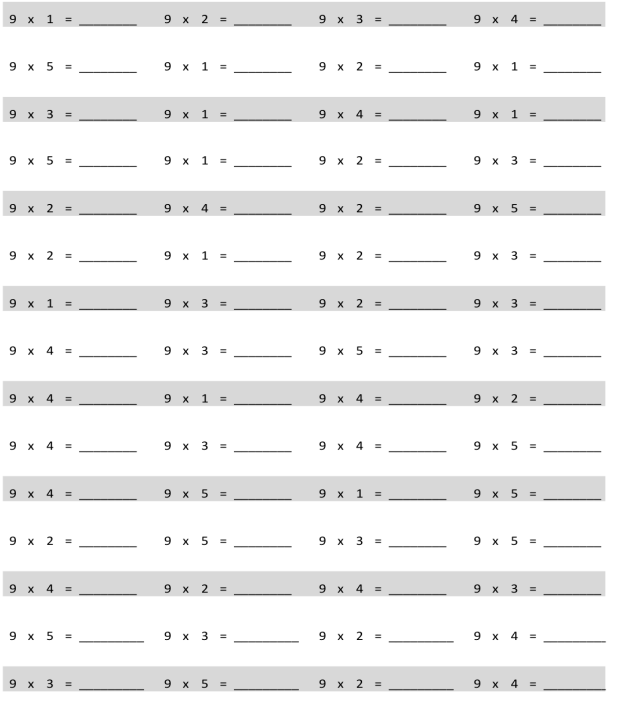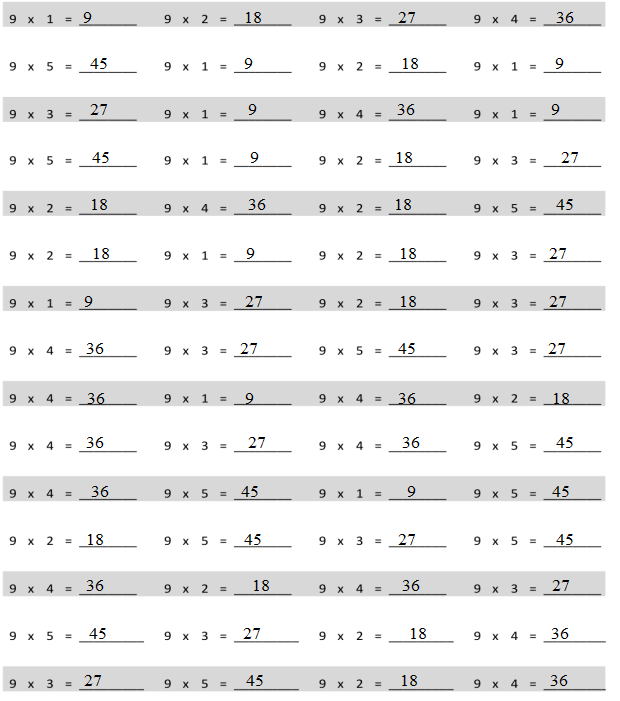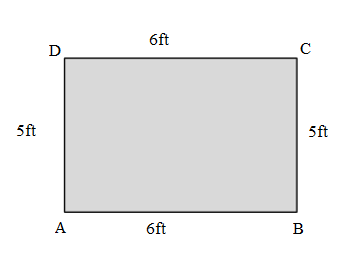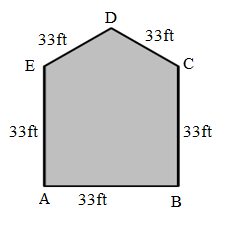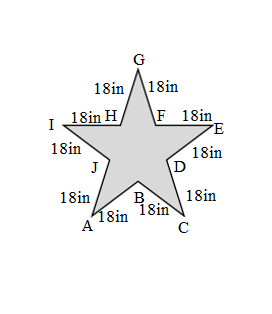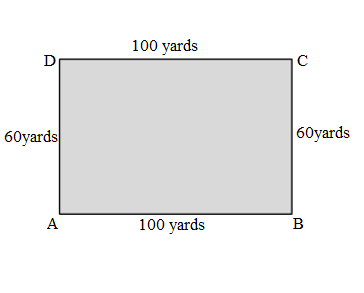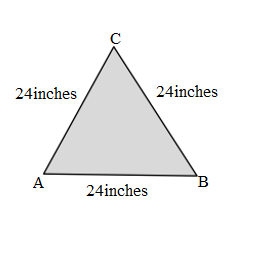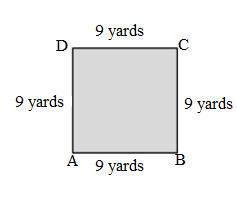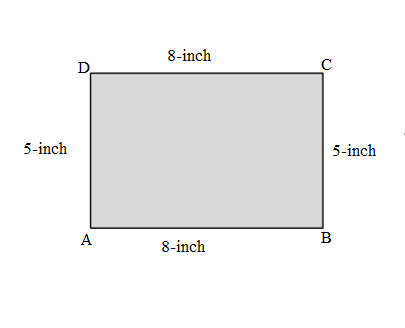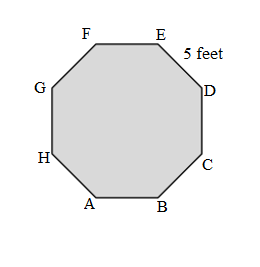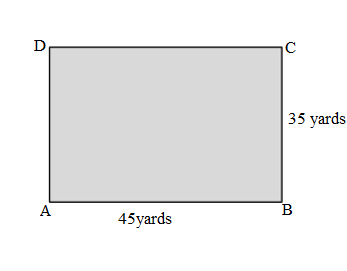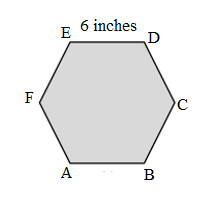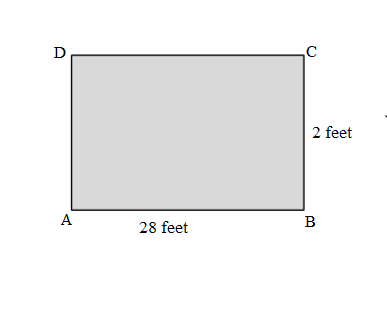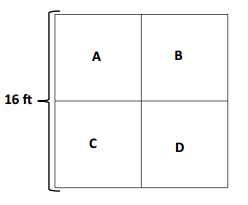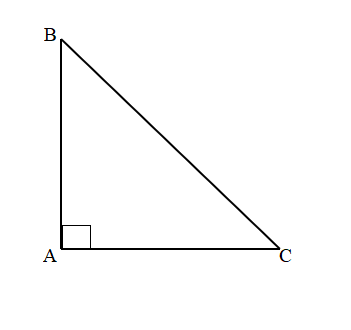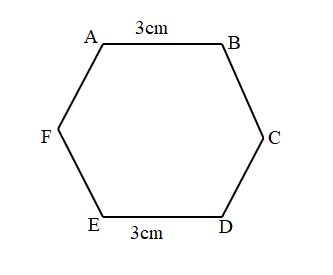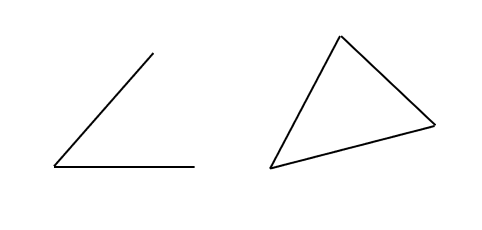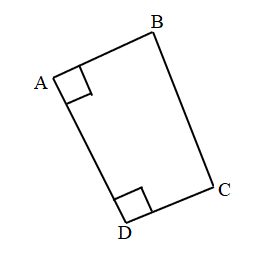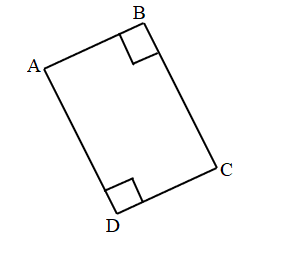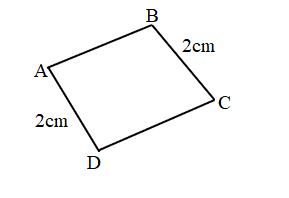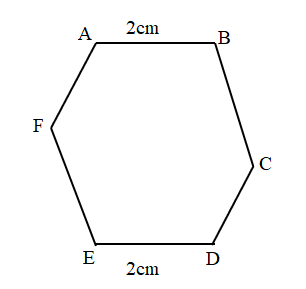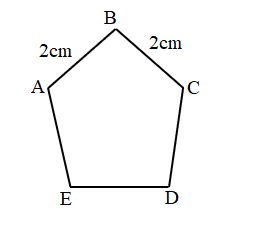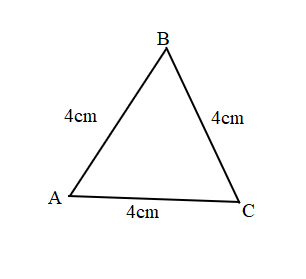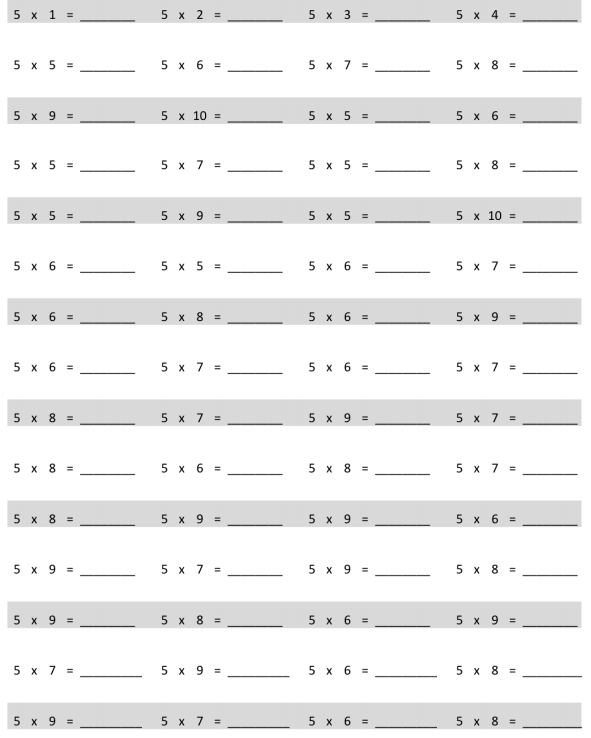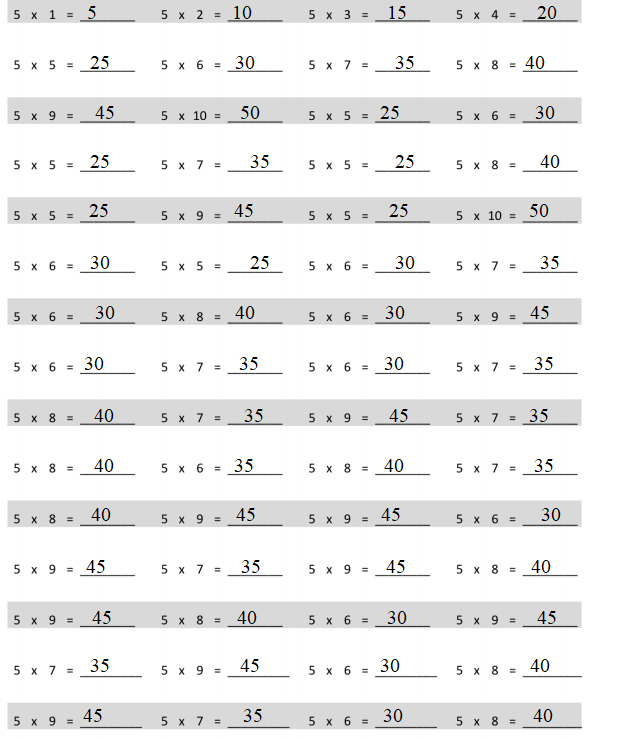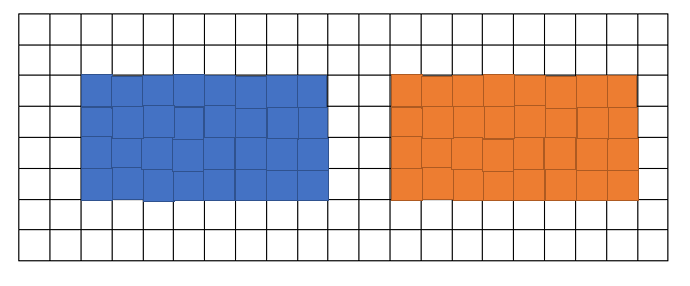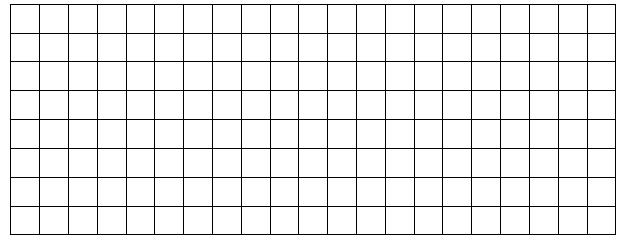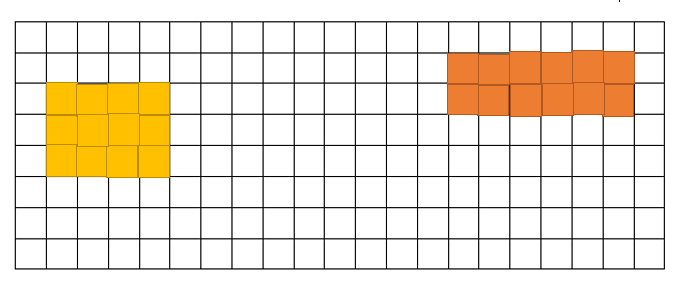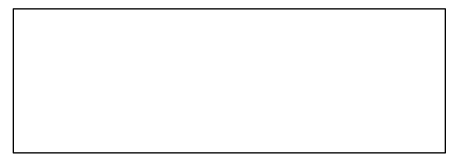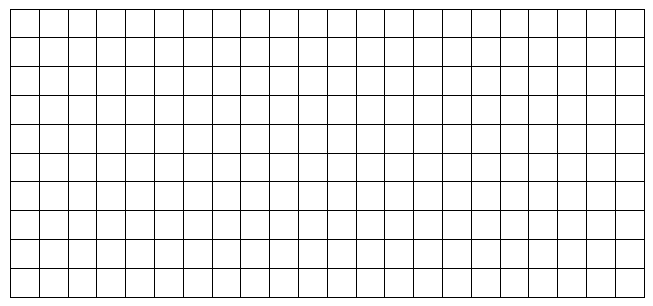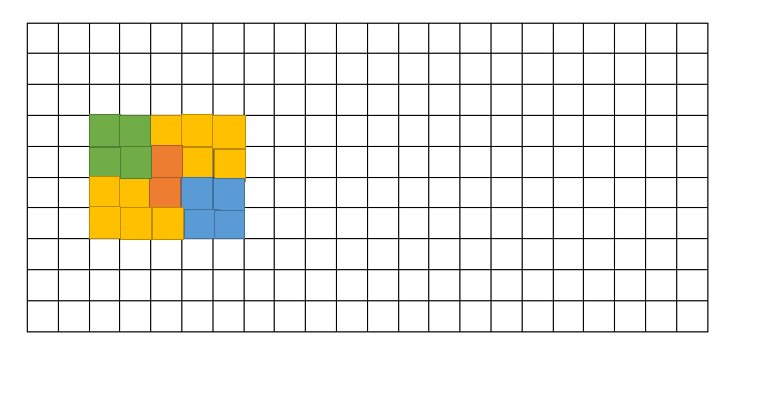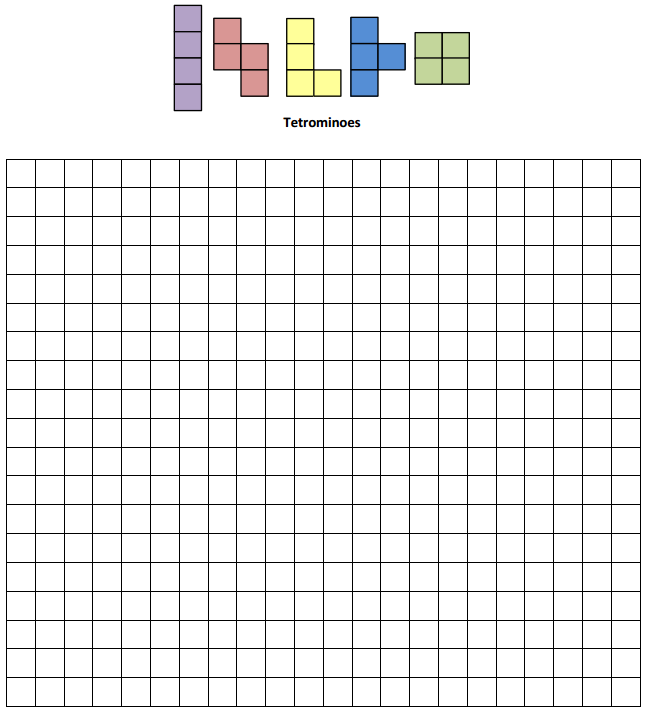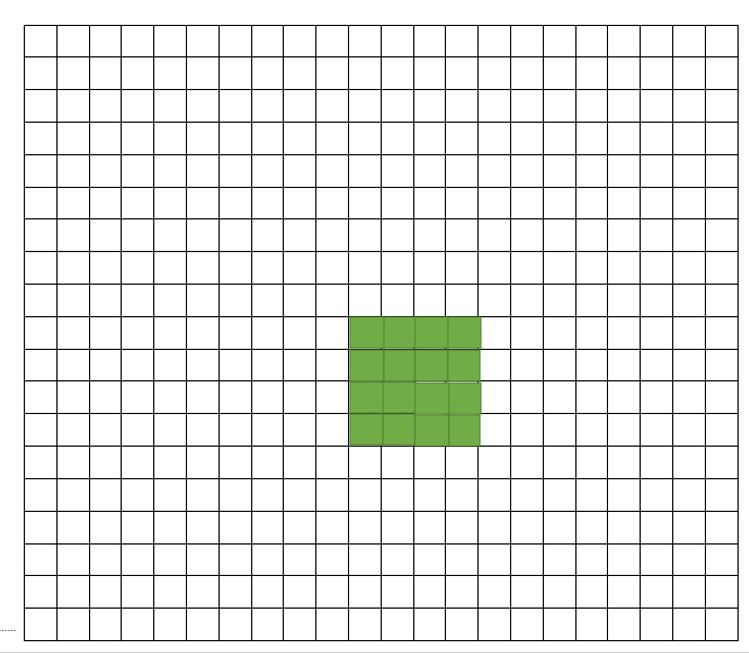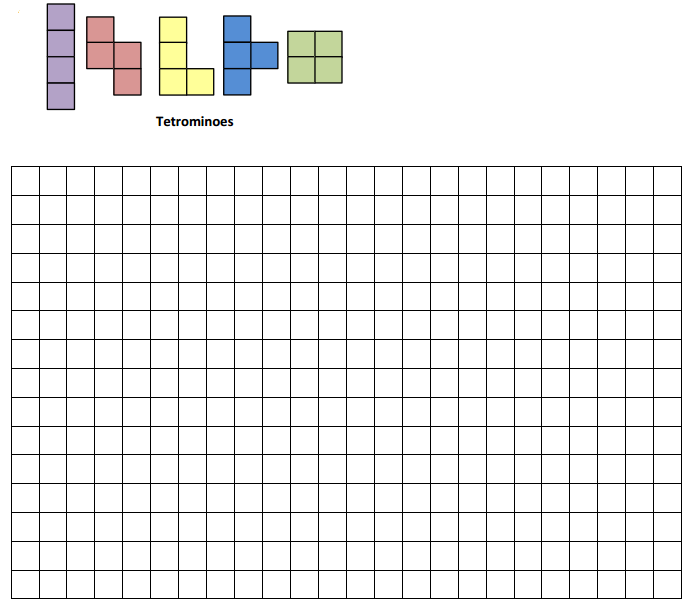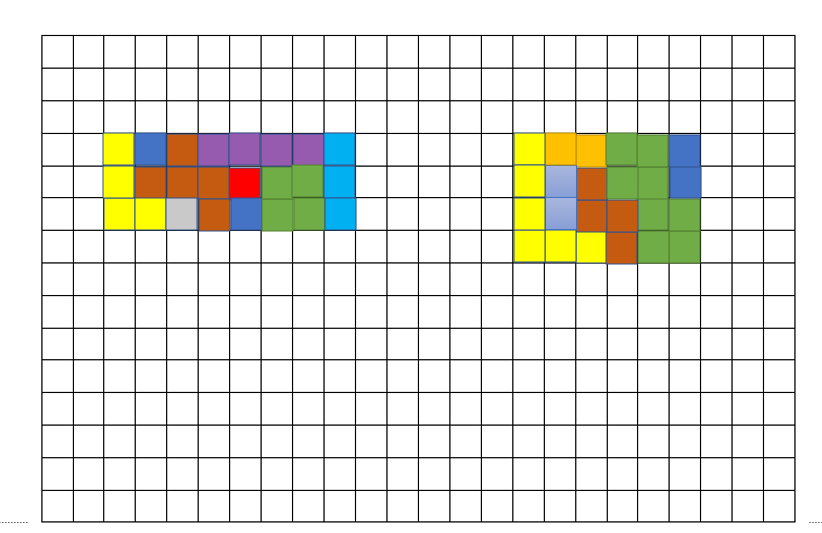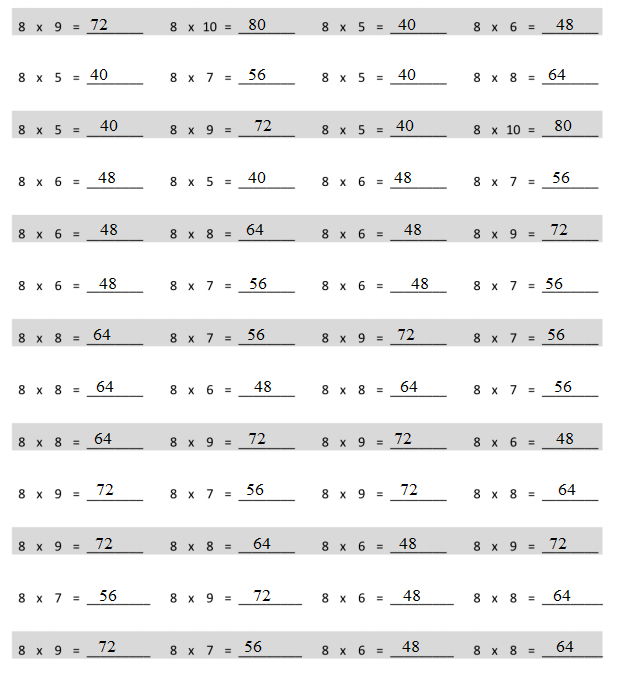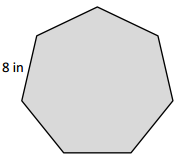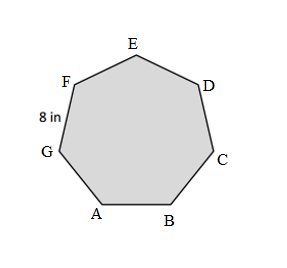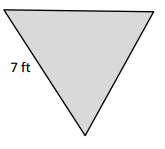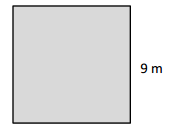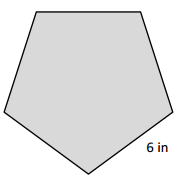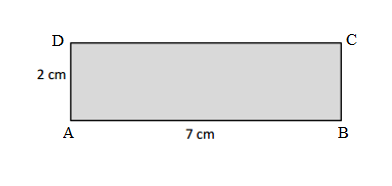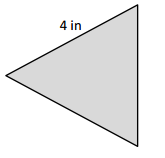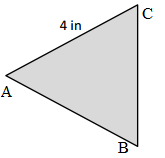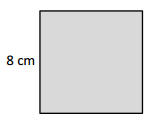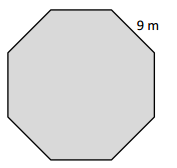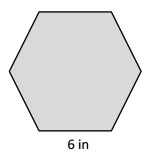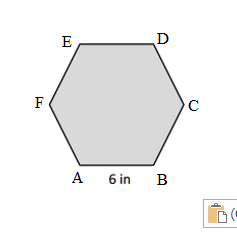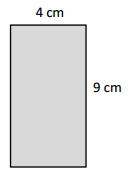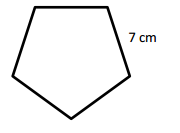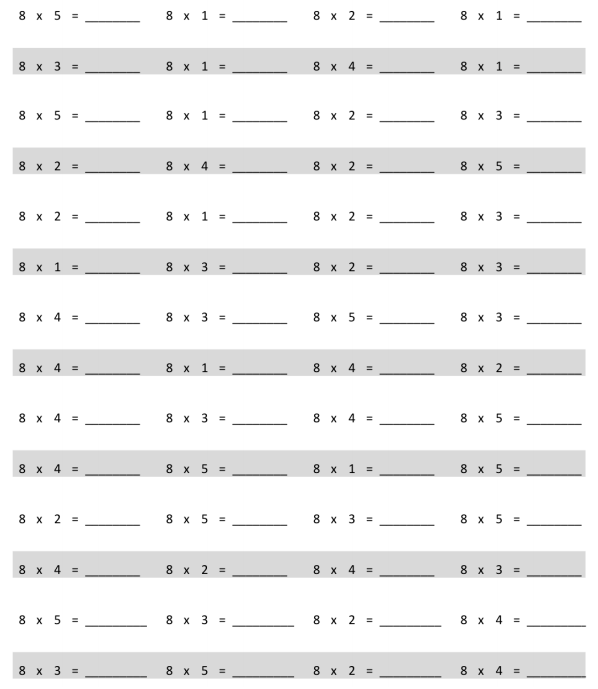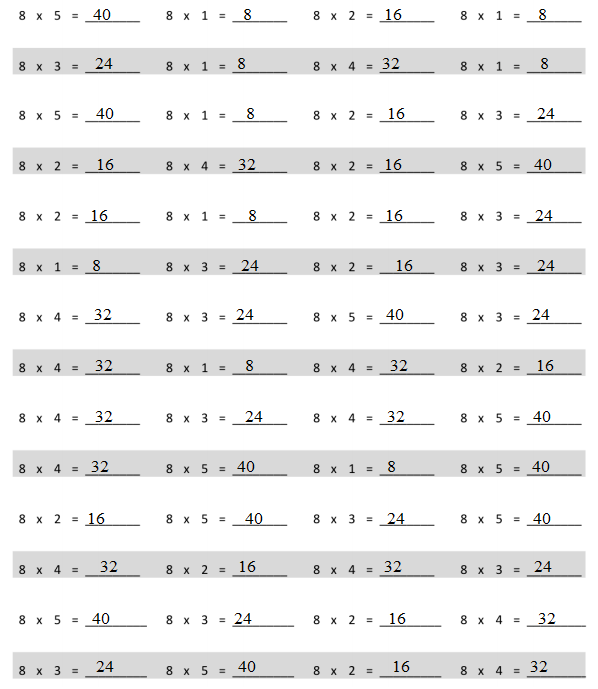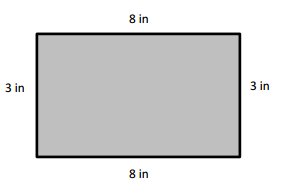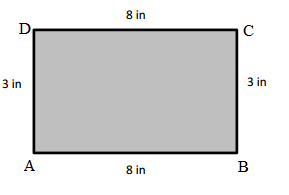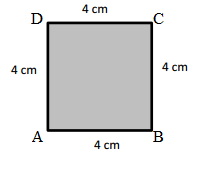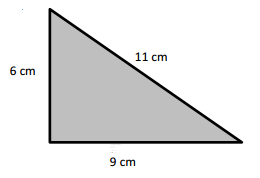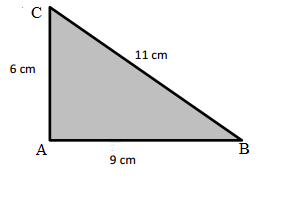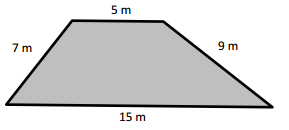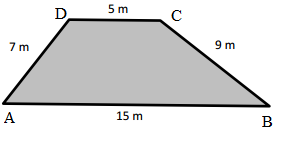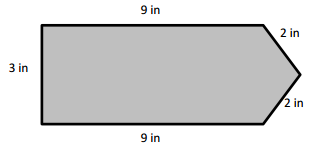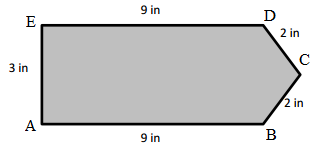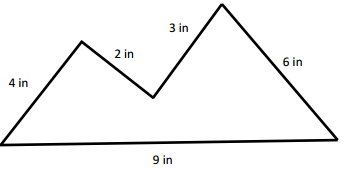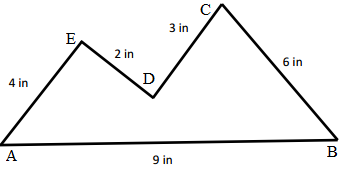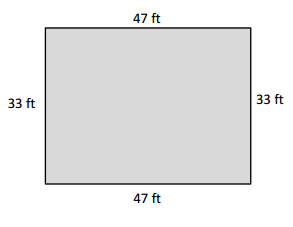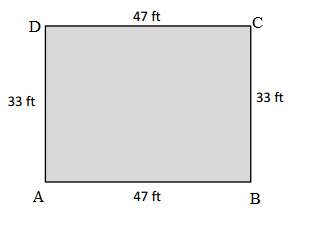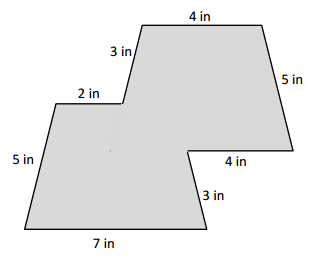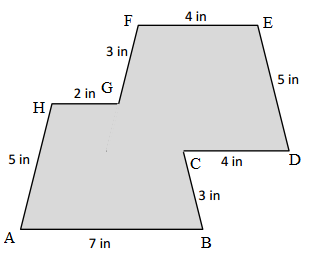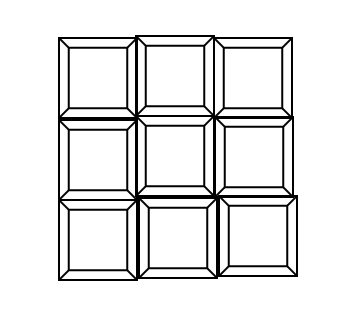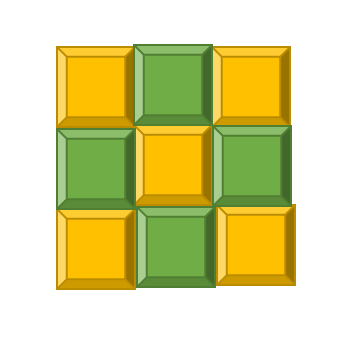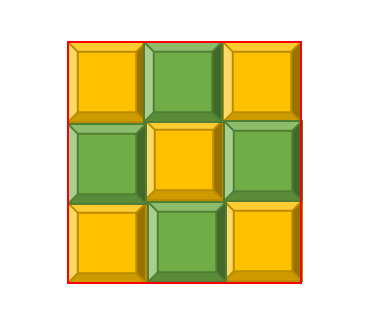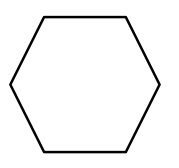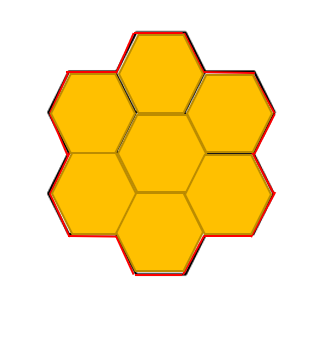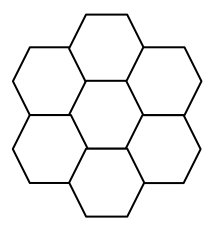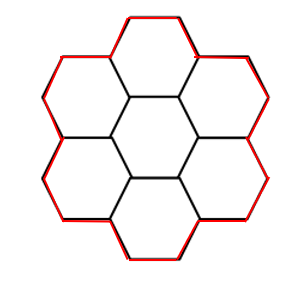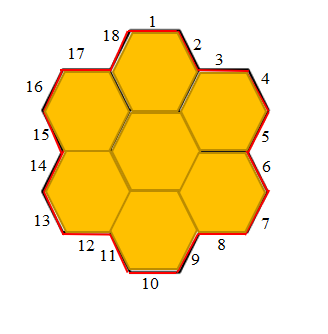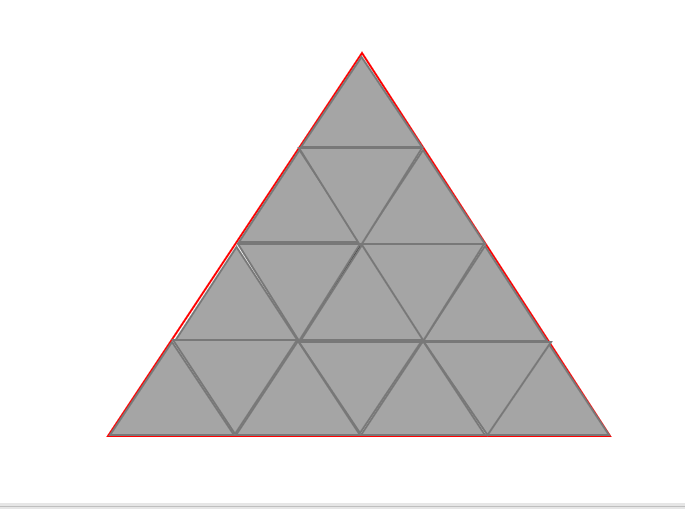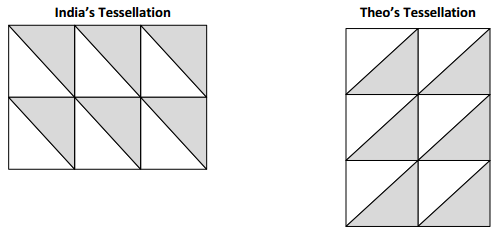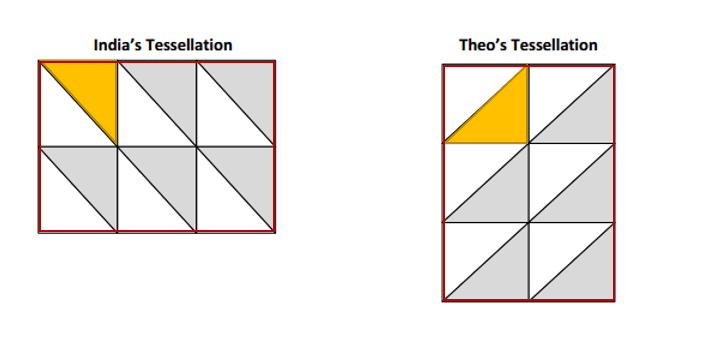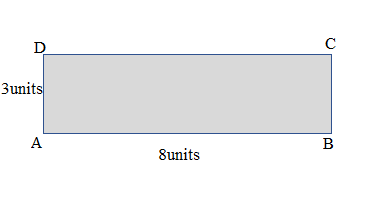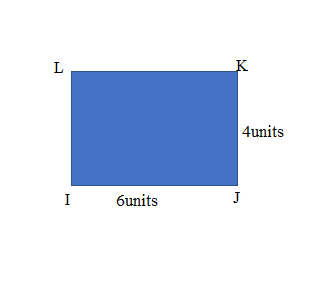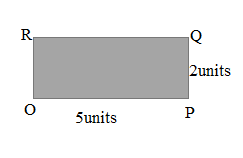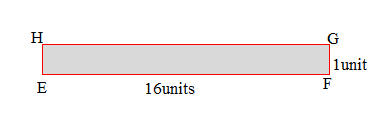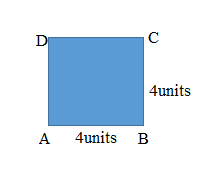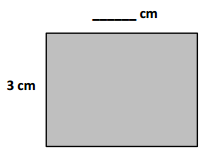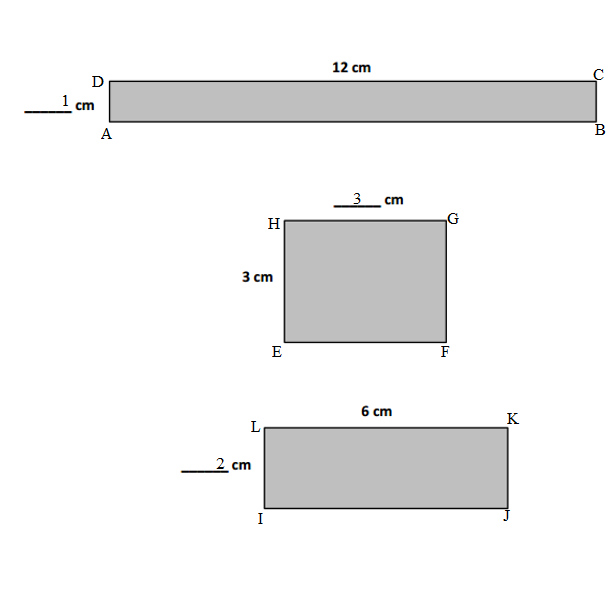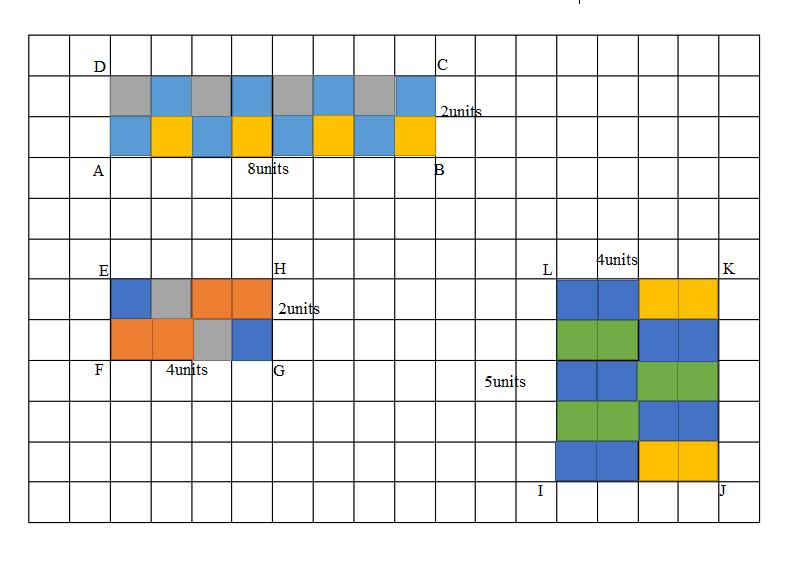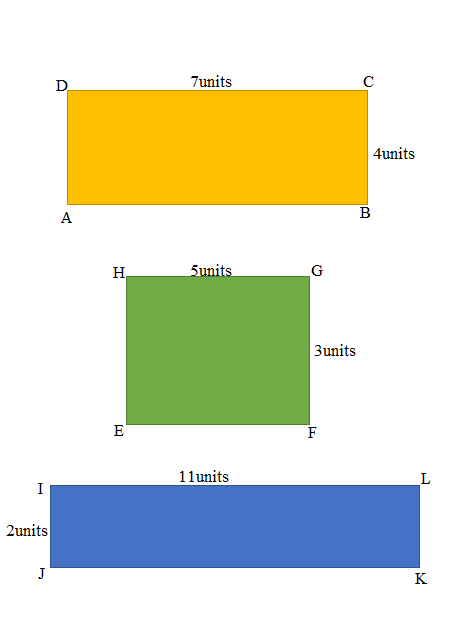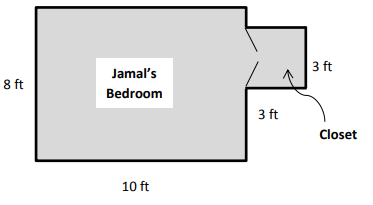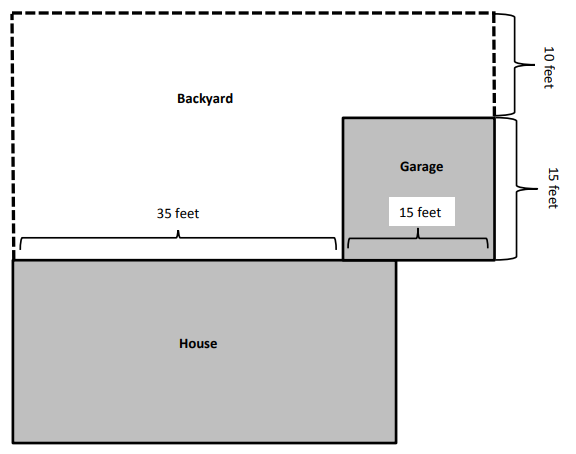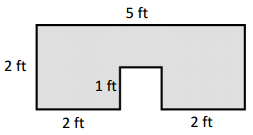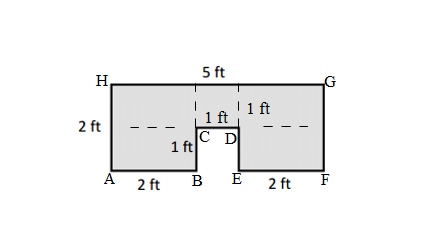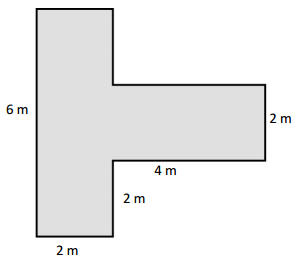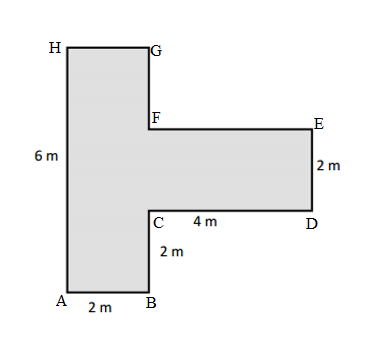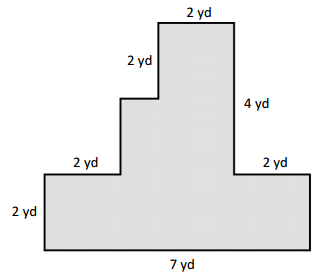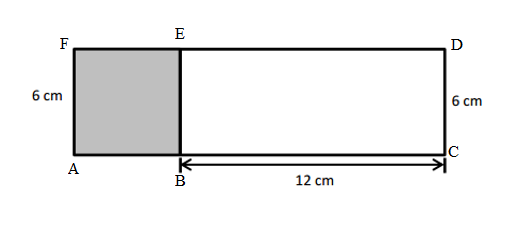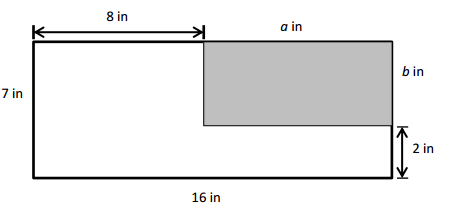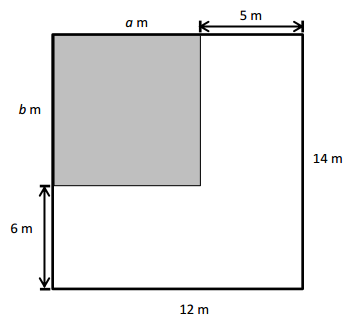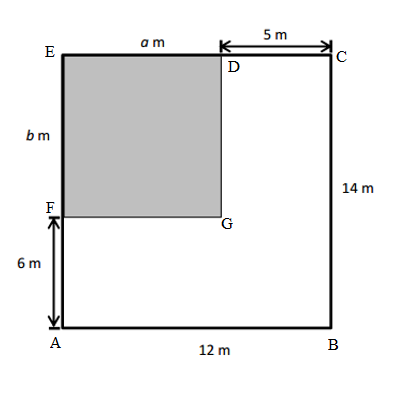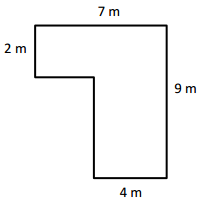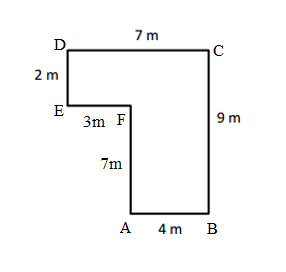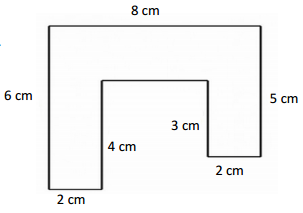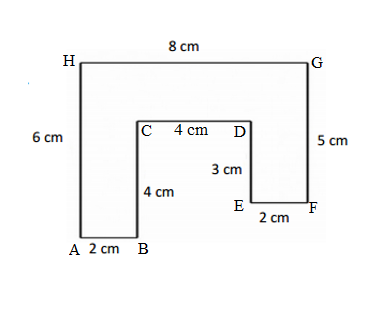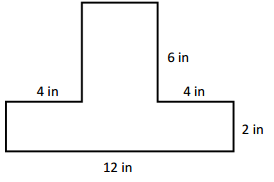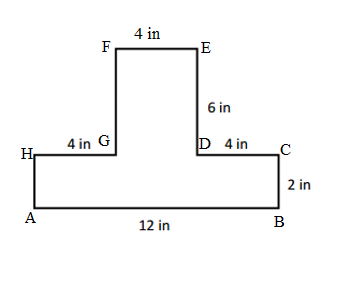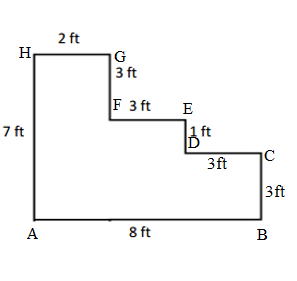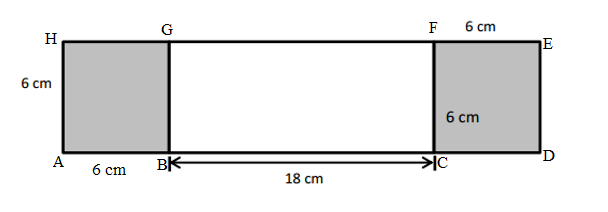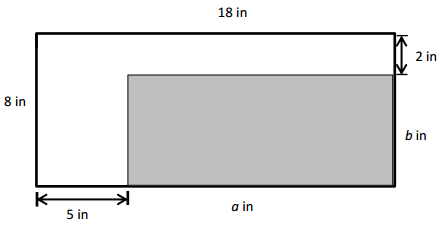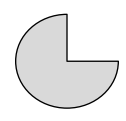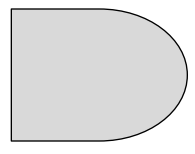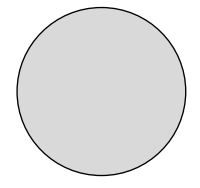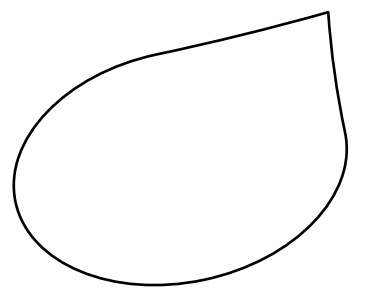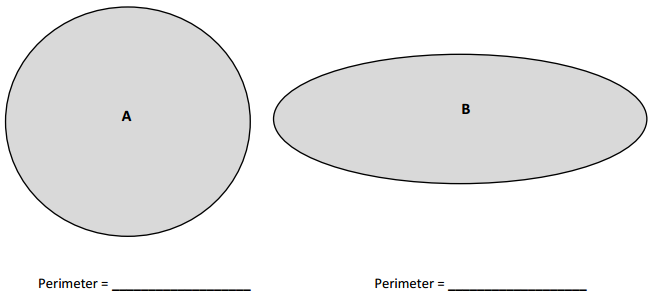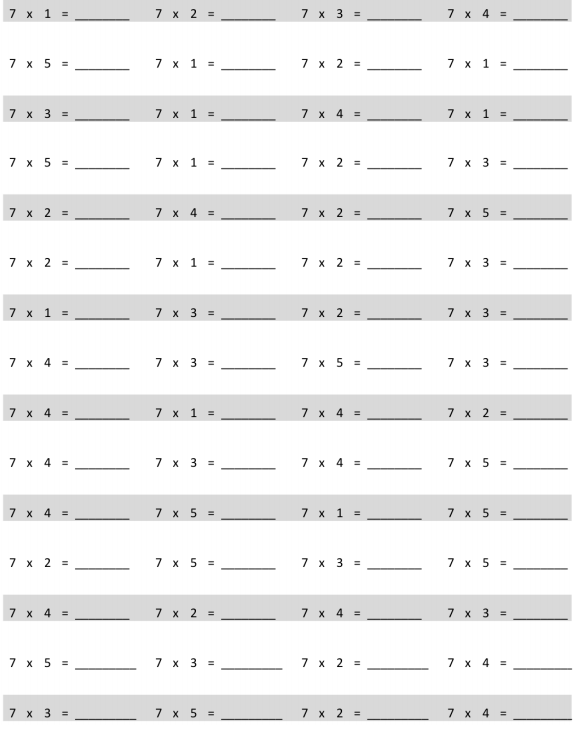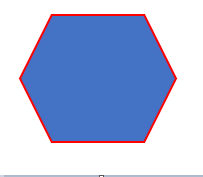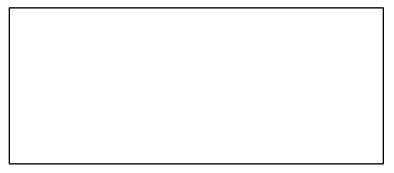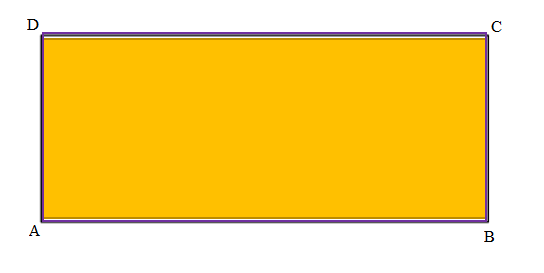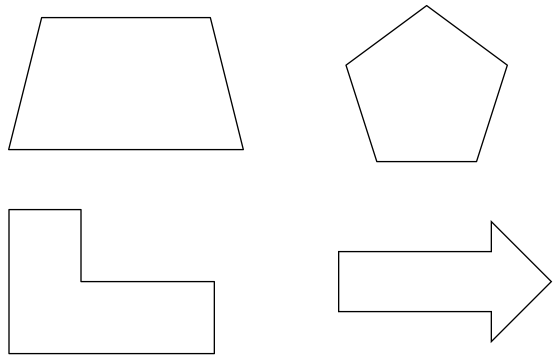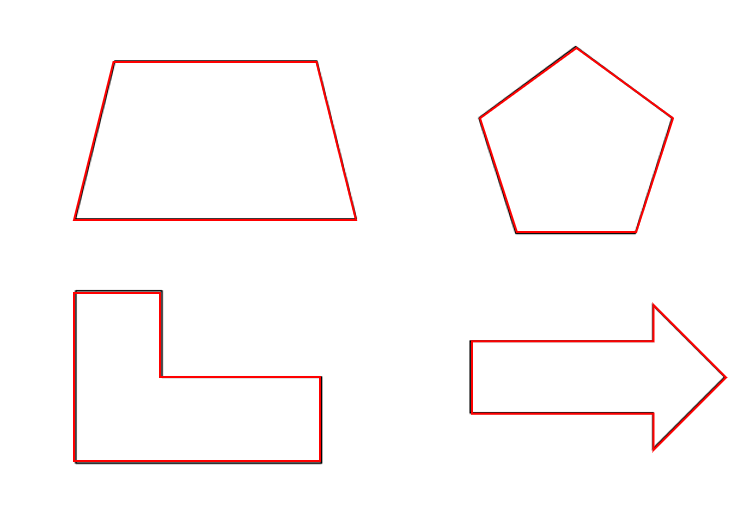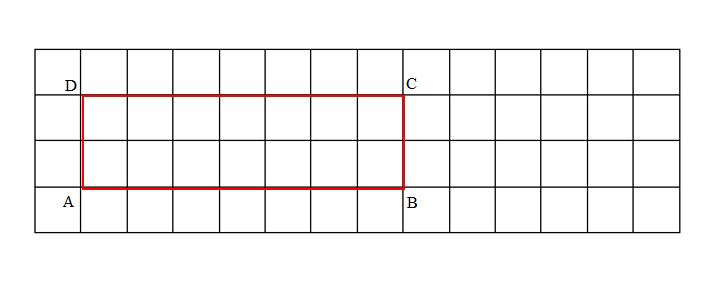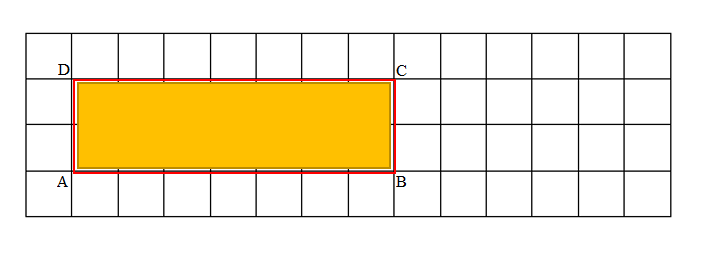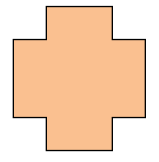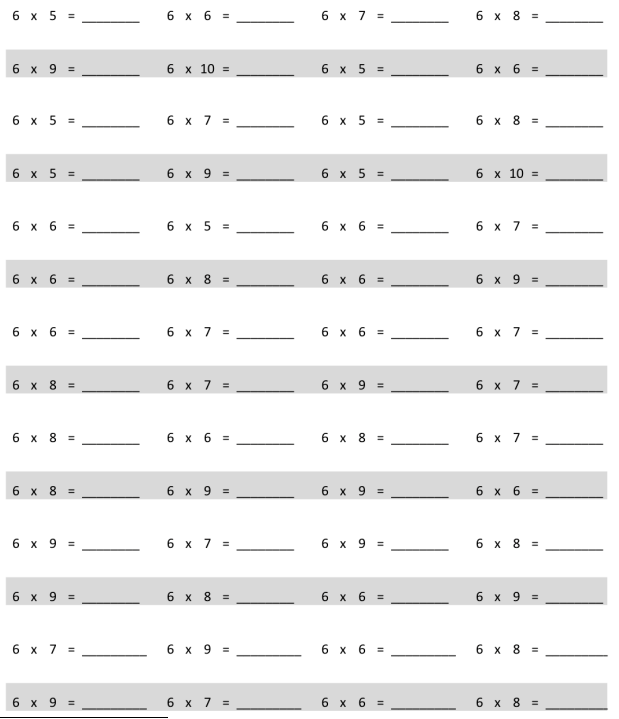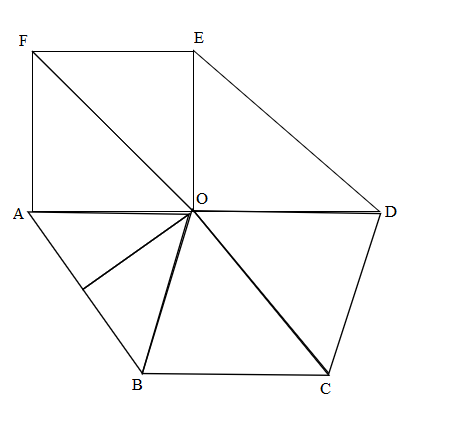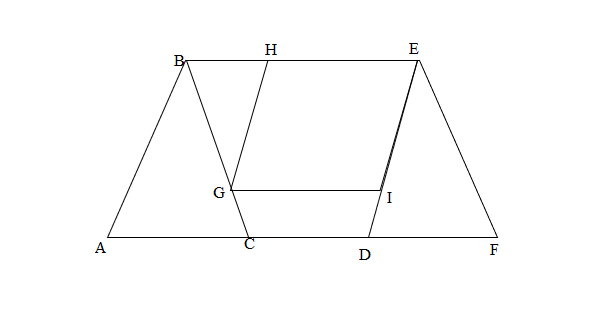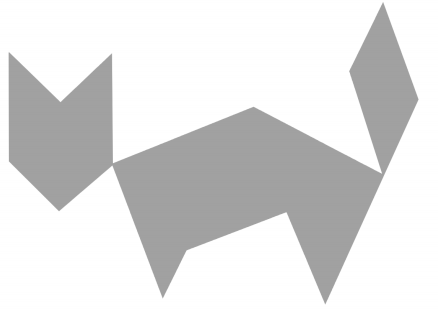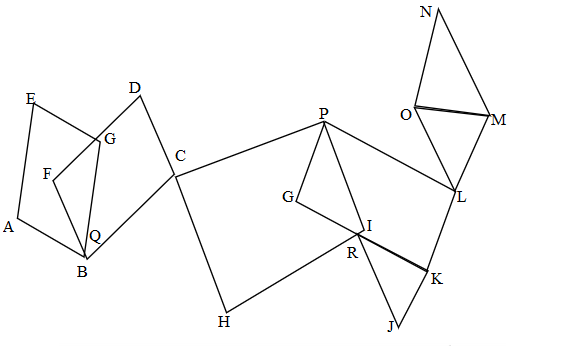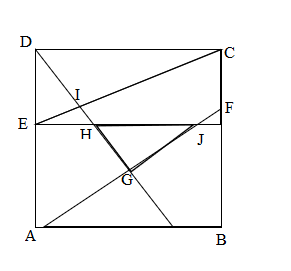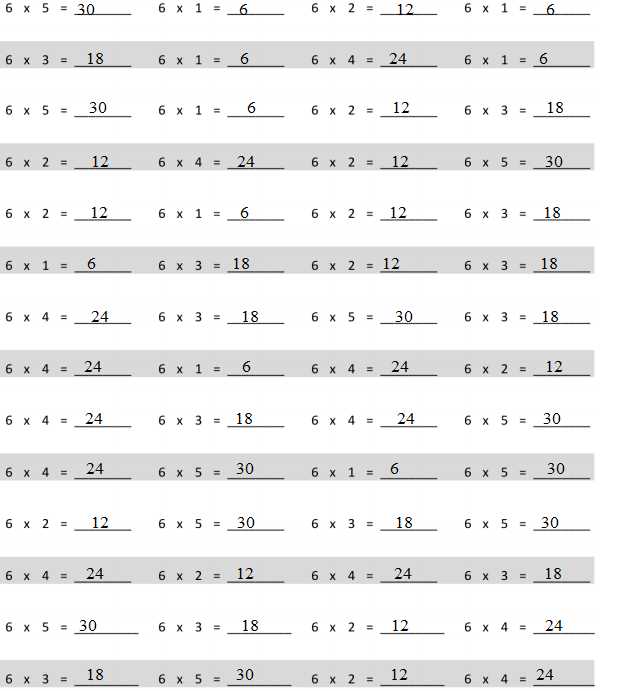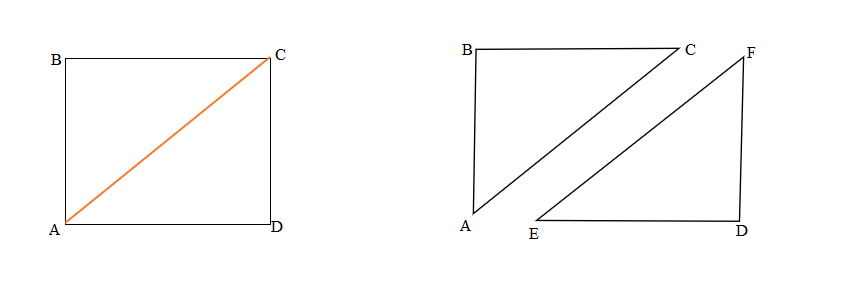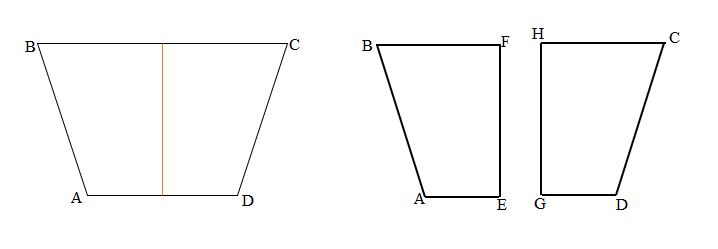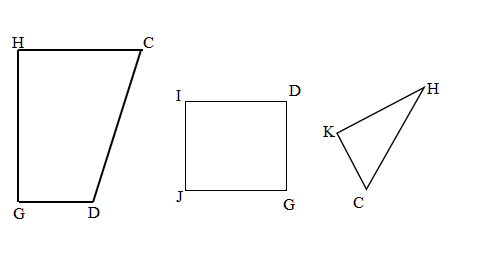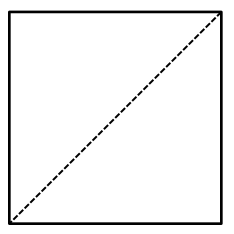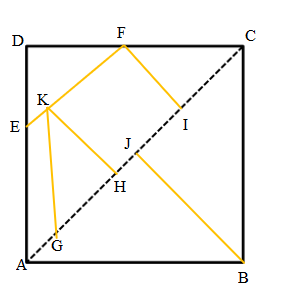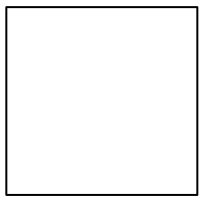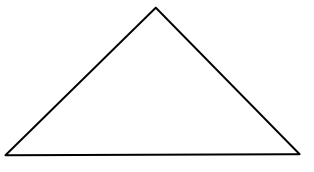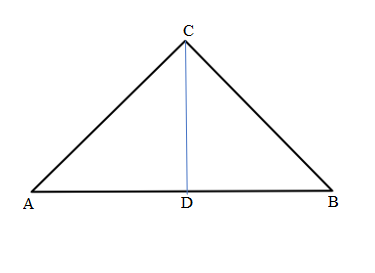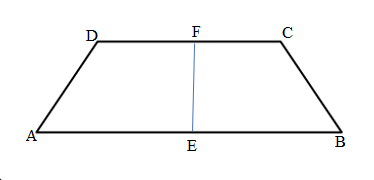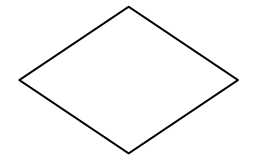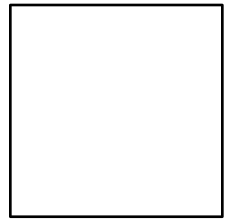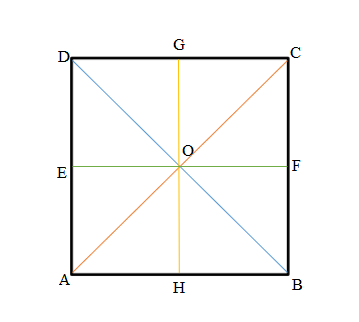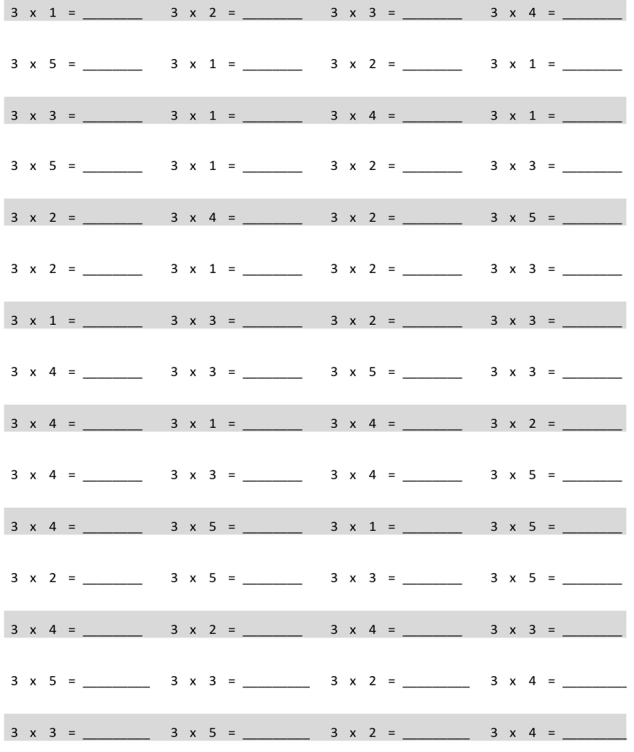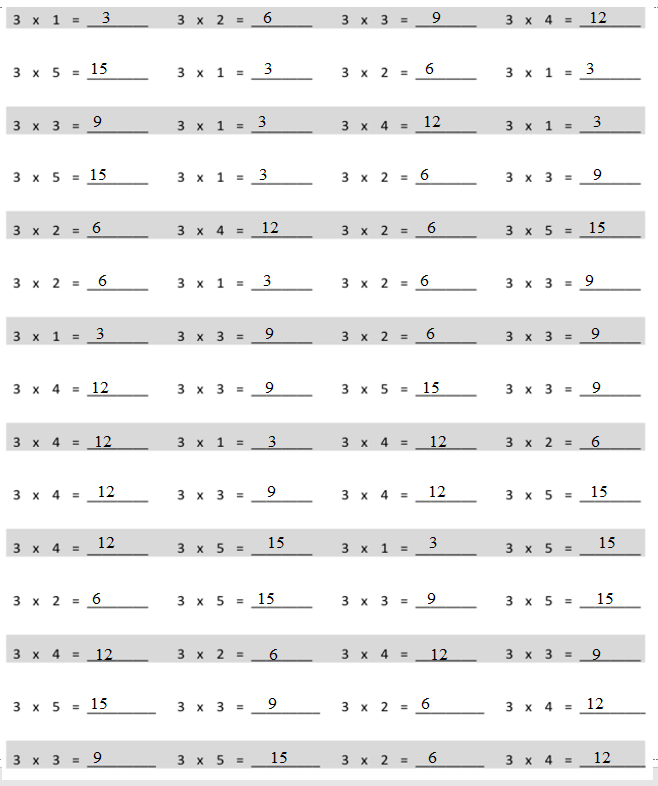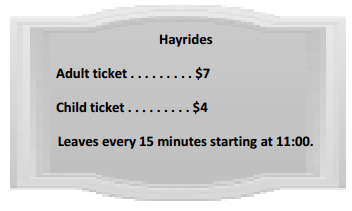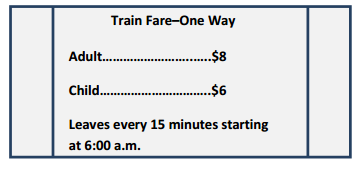Engage NY Eureka Math 3rd Grade Module 7 Lesson 12 Answer Key
Eureka Math Grade 3 Module 7 Lesson 12 Pattern Sheet Answer Key
Multiply.
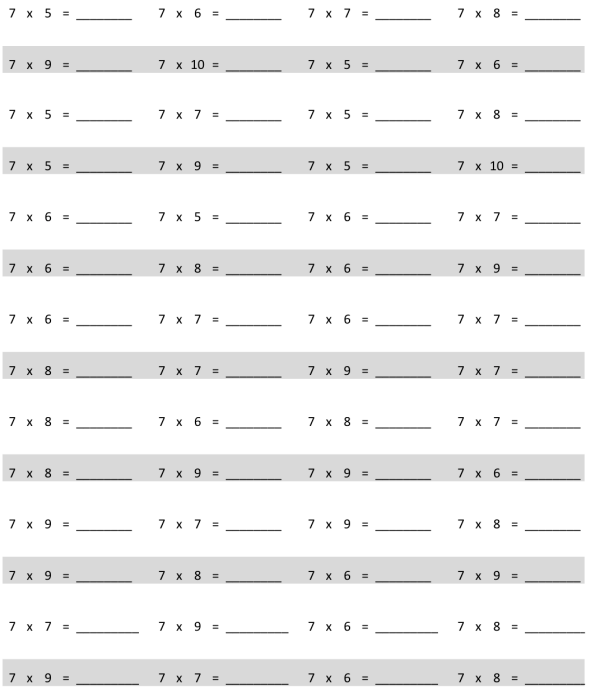
multiply by 7 (6–10)
Answer:
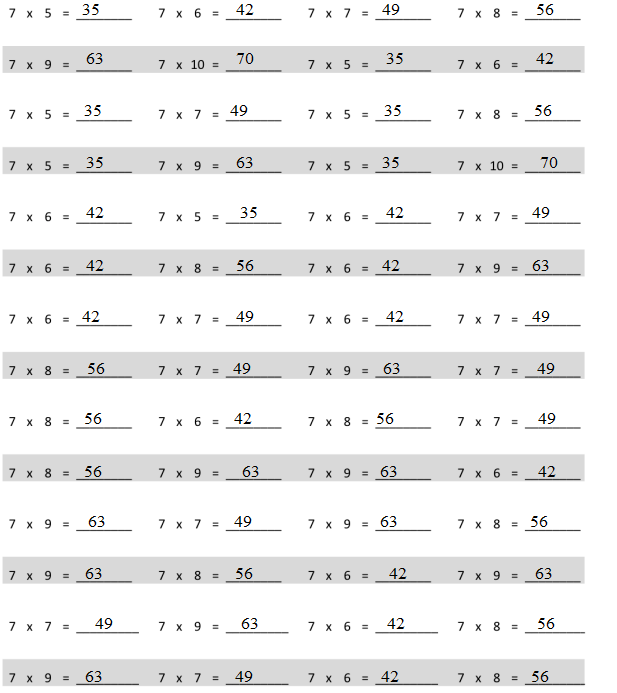
Explanation:
7 × 6 = 42
7 × 7 = 49
7 × 8 = 56
7 × 9 = 63
7 × 10 = 70.
Eureka Math Grade 3 Module 7 Lesson 12 Problem Set Answer Key
Question 1.
Measure and label the side lengths of the shapes below in centimeters. Then, find the perimeter of each shape.
a.

Perimeter = _____cm +_____cm +_____cm +_____cm
= _______ cm
Answer:
Perimeter of the ABCD given shape = Side + Side + Side + Side
= 2cm + 2cm + 2cm + 2cm
= 8cm.
Explanation:
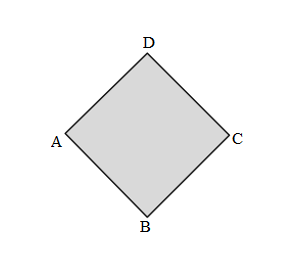
Length of the AB side of the ABCD shape = 2cm
Length of the BC side of the ABCD shape = 2cm
Length of the CD side of the ABCD shape = 2cm
Length of the DA side of the ABCD shape = 2cm
Perimeter of the given ABCD shape = Side + Side + Side + Side
= AB + BC + CD+ DA
= 2cm + 2cm + 2cm + 2cm
= 4cm + 2cm + 2cm
= 6cm + 2cm
= 8cm.
b.

Perimeter = _____________________
= _______ cm
Answer:
Perimeter of the given ABCDEF Hexagon shape = Side + Side + Side + Side + Side + Side
= 3cm + 3cm + 3cm + 3cm + 3cm + 3cm
= 18cm.
Explanation:
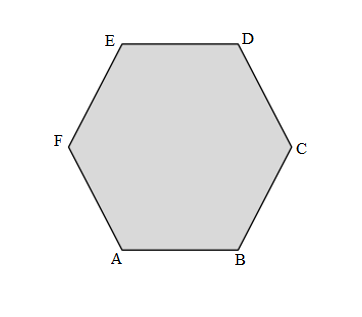
Length of the AB side of the given ABCDEF Hexagon shape = 3cm.
Length of the BC side of the given ABCDEF Hexagon shape = 3cm.
Length of the CD side of the given ABCDEF Hexagon shape = 3cm.
Length of the DE side of the given ABCDEF Hexagon shape = 3cm.
Length of the EF side of the given ABCDEF Hexagon shape = 3cm.
Length of the FA side of the given ABCDEF Hexagon shape = 3cm.
Perimeter of the given ABCDEF Hexagon shape = Side + Side + Side + Side + Side + Side
= AB + BC + CD + DE + EF + FA
= 3cm + 3cm + 3cm + 3cm + 3cm + 3cm
= 6cm +3cm + 3cm + 3cm + 3cm
= 9cm +3cm + 3cm + 3cm
= 12cm +3cm + 3cm
= 15cm + 3cm
= 18cm.
c.
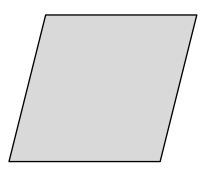
Perimeter = _____________________
= _______ cm
Answer:
Perimeter of the given ABCD Parallelogram shape = Side + Side + Side + Side
= 4cm + 4cm + 4cm + 4cm
= 16cm.
Explanation:
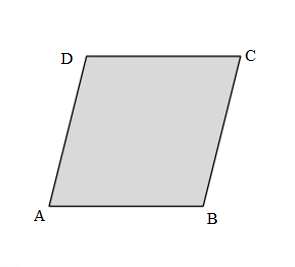
Length of the AB side of the given ABCD Parallelogram shape = 4cm
Length of the BC side of the given ABCD Parallelogram shape = 4cm
Length of the CD side of the given ABCD Parallelogram shape = 4cm
Length of the DA side of the given ABCD Parallelogram shape = 4cm
Perimeter of the given ABCD Parallelogram shape = Side + Side + Side + Side
=AB + BC + CD +DA
= 4cm + 4cm + 4cm + 4cm
= 8cm + 4cm + 4cm
= 12cm + 4cm
=16cm.
d.

Perimeter = _____________________
= _______ cm
Answer:
Perimeter of the ABC Triangle = Side + Side + Side
= 5cm + 5cm + 5cm
= 15cm.
Explanation:

Length of the AB side of the ABC Triangle = 5cm
Length of the BC side of the ABC Triangle = 5cm
Length of the CA side of the ABC Triangle = 5cm
Perimeter of the ABC Triangle = Side + Side + Side
= AB + BC + CA
= 5cm + 5cm + 5cm
= 10cm + 5cm
= 15cm.
e.

Perimeter = _____________________
= _______ cm
Answer:
Perimeter of the given ABCDEF figure = Side + Side + Side + Side + Side + Side
= AB + BC + CD + DE+ EF + FA
= 5.5cm+ 1cm + 3cm + 2cm + 3cm + 3cm
= 17.5cm
Explanation:
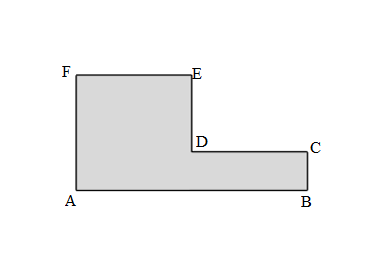
Length of AB side if the given ABCDEF figure = 5.5cm
Length of BC side if the given ABCDEF figure = 1cm
Length of CD side if the given ABCDEF figure = 3cm
Length of DE side if the given ABCDEF figure = 2cm
Length of EF side if the given ABCDEF figure = 3cm
Length of FA side if the given ABCDEF figure = 3cm
Perimeter of the given ABCDEF figure = Side + Side + Side + Side + Side + Side
= AB + BC + CD + DE+ EF + FA
= 5.5cm+ 1cm + 3cm + 2cm + 3cm + 3cm
= 6.5cm + 3cm + 2cm + 3cm + 3cm
= 9.5cm + 2cm + 3cm + 3cm
= 11.5cm + 3cm + 3cm
= 14.5cm + 3cm
= 17.5cm
Question 2.
Carson draws two triangles to create the new shape shown below. Use a ruler to find the side lengths of Carson’s shape in centimeters. Then, find the perimeter.

Answer:
Perimeter of ABCD Carson’s shape = Side + Side + Side + Side
= AB + BC + CD+ DA
= 2cm + 2cm + 2cm + 2cm
=8cm.
Explanation:
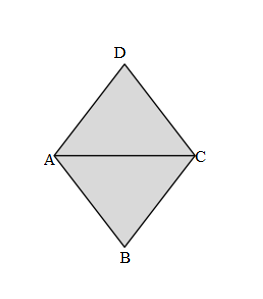
Length of AB side of ABCD Carson’s shape = 2cm
Length of BC side of ABCD Carson’s shape = 2cm
Length of CD side of ABCD Carson’s shape = 2cm
Length of DA side of ABCD Carson’s shape = 2cm
Perimeter of ABCD Carson’s shape = Side + Side + Side + Side
= AB + BC + CD+ DA
= 2cm + 2cm + 2cm + 2cm
=4cm + 2cm + 2cm
= 6cm + 2cm
=8cm.
Question 3.
Hugh and Daisy draw the shapes shown below. Measure and label the side lengths in centimeters. Whose shape has a greater perimeter? How do you know?

Answer:
Perimeter of ABCDE Hugh’s shape = Side + Side + Side + Side + Side
= AB + BC + CD + DE + EA
= 3cm + 3cm + 3cm + 3cm + 3cm
= 15cm.
Perimeter of FGHI Daisy’s shape = Side + Side + Side + Side
= FG+ GH+ HI+ IF
= 4cm + 5cm + 4cm + 3cm
= 16cm.
Perimeter of FGHI Daisy’s shape is greater than the Perimeter of ABCDE Hugh’s shape because the measurement value is greater than the other one’s shape.
Explanation:

Length of the AB side of ABCDE Hugh’s shape = 3cm
Length of the BC side of ABCDE Hugh’s shape = 3cm
Length of the CD side of ABCDE Hugh’s shape = 3cm
Length of the DE side of ABCDE Hugh’s shape = 3cm
Length of the EA side of ABCDE Hugh’s shape = 3cm
Perimeter of ABCDE Hugh’s shape = Side + Side + Side + Side + Side
= AB + BC + CD + DE + EA
= 3cm + 3cm + 3cm + 3cm + 3cm
= 6cm + 3cm + 3cm + 3cm
= 9cm + 3cm + 3cm
= 12cm + 3cm
= 15cm.
Length of the FG side of FGHI Daisy’s shape = 4cm
Length of the GH side of FGHI Daisy’s shape = 5cm
Length of the HI side of FGHI Daisy’s shape = 4cm
Length of the IF side of FGHI Daisy’s shape = 3cm
Perimeter of FGHI Daisy’s shape = Side + Side + Side + Side
= FG+ GH+ HI+ IF
= 4cm + 5cm + 4cm + 3cm
= 9cm + 4cm +3cm
= 13cm + 3cm
= 16cm.
Question 4.
Andrea measures one side length of the square below and says she can find the perimeter with that measurement. Explain Andrea’s thinking. Then, find the perimeter in centimeters.
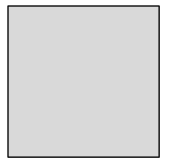
Answer:
Andrea’s figure is a Square. So, her figure’s all sides are going to be equal. Yes, she is correct in her thinking.
Perimeter of ABCD Andrea’s Square = Side + Side + Side + Side
= 4cm + 4cm + 4cm+ 4cm
= 16cm.
Explanation:
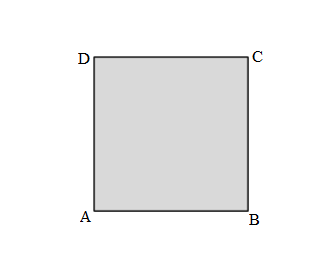
Andrea’s figure is a Square. So, her figure’s all sides are going to be equal. Yes, she is correct in her thinking, ” measuring one side length of the square below, she can find the perimeter with that measurement.”
Length of AB side of Andrea’s Square = 4cm
Perimeter of ABCD Andrea’s Square = Side + Side + Side + Side
= 4cm + 4cm + 4cm+ 4cm
= 8cm + 4cm + 4cm
=12cm + 4cm
= 16cm.
Eureka Math Grade 3 Module 7 Lesson 12 Exit Ticket Answer Key
Measure and label the side lengths of the shape below in centimeters. Then, find the perimeter.
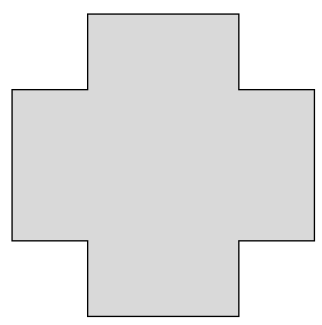
Perimeter = __________________________________________
= _______ cm
Answer:
Perimeter of the given ABCDEFGHIJK Shape = Side + Side + Side + Side + Side + Side + Side + Side + Side + Side + Side + Side
= AB + BC+ CD + DE + EF + FG + GH + HI + IJ + JK +KL + LA
= 4cm + 2cm + 2cm + 4cm + 2cm + 2cm + 4cm + 2cm + 2cm + 4cm + 2cm + 2cm
= 32cm.
Explanation:
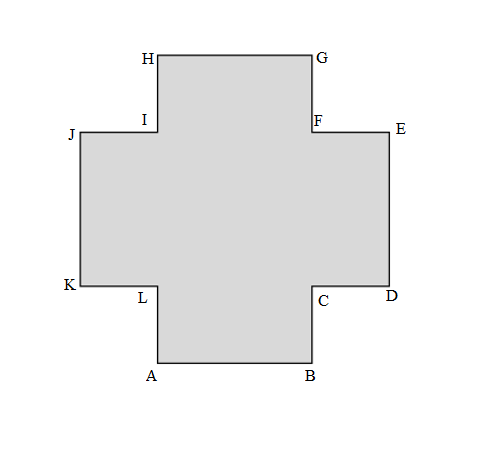
Length of the AB side of the given ABCDEFGHIJK Shape = 4cm
Length of the BC side of the given ABCDEFGHIJK Shape = 2cm
Length of the CD side of the given ABCDEFGHIJK Shape = 2cm
Length of the DE side of the given ABCDEFGHIJK Shape = 4cm
Length of the EF side of the given ABCDEFGHIJK Shape = 2cm
Length of the FG side of the given ABCDEFGHIJK Shape = 2cm
Length of the GH side of the given ABCDEFGHIJK Shape = 4cm
Length of the HI side of the given ABCDEFGHIJK Shape = 2cm
Length of the IJ side of the given ABCDEFGHIJK Shape = 2cm
Length of the JK side of the given ABCDEFGHIJK Shape = 4cm
Length of the KL side of the given ABCDEFGHIJK Shape = 2cm
Length of the LA side of the given ABCDEFGHIJK Shape = 2cm
Perimeter of the given ABCDEFGHIJK Shape = Side + Side + Side + Side + Side + Side + Side + Side + Side + Side + Side + Side
= AB + BC+ CD + DE + EF + FG + GH + HI + IJ + JK +KL + LA
= 4cm + 2cm + 2cm + 4cm + 2cm + 2cm + 4cm + 2cm + 2cm + 4cm + 2cm + 2cm
= 6cm + 2cm + 4cm + 2cm + 2cm + 4cm + 2cm + 2cm + 4cm + 2cm + 2cm
= 8cm + 4cm + 2cm + 2cm + 4cm + 2cm + 2cm + 4cm + 2cm + 2cm
= 12cm + 2cm + 2cm + 4cm + 2cm + 2cm + 4cm + 2cm + 2cm
= 14cm + 2cm + 4cm + 2cm + 2cm + 4cm + 2cm + 2cm
= 16cm + 4cm + 2cm + 2cm + 4cm + 2cm + 2cm
= 20 cm + 2cm + 2cm + 4cm + 2cm + 2cm
= 22cm + 2cm + 4cm + 2cm + 2cm
= 24cm + 4cm + 2cm + 2cm
= 28cm + 2cm + 2cm
= 30cm + 2cm
= 32cm.
Eureka Math Grade 3 Module 7 Lesson 12 Homework Answer Key
Question 1.
Measure and label the side lengths of the shapes below in centimeters. Then, find the perimeter of each shape.
a.
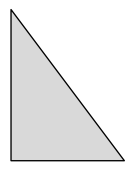
Perimeter = _____cm +_____cm +_____cm
= _______ cm
Answer:
Perimeter of ABC triangle = Side + Side + Side
= AB + BC + CA
= 3cm + 5cm + 4cm
= 12cm.
Explanation:

Length of the AB side of ABC triangle = 3cm
Length of the BC side of ABC triangle = 5cm
Length of the CA side of ABC triangle = 4cm
Perimeter of ABC triangle = Side + Side + Side
= AB + BC + CA
= 3cm + 5cm + 4cm
= 8cm + 4cm
= 12cm.
b.

Perimeter = _____________________
= _______ cm
Answer:
Perimeter of ABCD rectangle = Side + Side + Side + Side
= AB + BC + CD + DA
= 6cm + 4cm + 6cm + 4cm
= 20cm.
Explanation:
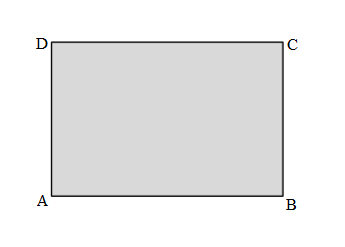
Length of the AB side of ABCD rectangle = 6cm
Length of the BC side of ABCD rectangle = 4cm
Length of the CD side of ABCD rectangle = 6cm
Length of the DA side of ABCD rectangle = 4cm
Perimeter of ABCD rectangle = Side + Side + Side + Side
= AB + BC + CD + DA
= 6cm + 4cm + 6cm + 4cm
= 10cm + 6cm + 4cm
= 16cm + 4cm
= 20cm.
c.
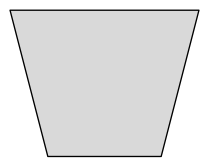
Perimeter = _____________________
= _______ cm
Answer:
Perimeter of the ABCD Quadrilateral = Side + Side + Side + Side
= AB + BC + CD + DA
= 3cm + 4cm + 5cm + 4cm
= 16cm.
Explanation:

Length of the AB side in the ABCD Quadrilateral = 3cm
Length of the BC side in the ABCD Quadrilateral = 4cm
Length of the CD side in the ABCD Quadrilateral = 5cm
Length of the DA side in the ABCD Quadrilateral = 4cm
Perimeter of the ABCD Quadrilateral = Side + Side + Side + Side
= AB + BC + CD + DA
= 3cm + 4cm + 5cm + 4cm
= 7cm + 5cm + 4cm
= 12cm + 4cm
= 16cm.
d.
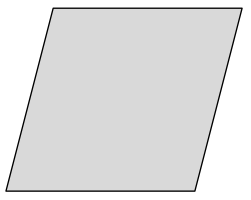
Perimeter = _____________________
= _______ cm
Answer:
Perimeter of the ABCD Parallelogram = Side + Side + Side + Side
= AB + BC + CD + DA
= 5cm + 5cm + 5cm + 5cm
= 20cm.
Explanation:
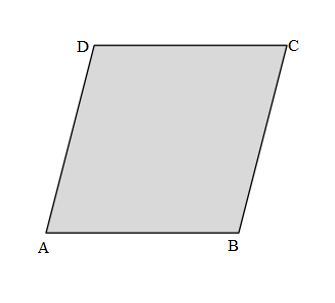
Length of the AB side of the ABCD parallelogram = 5cm
Length of the BC side of the ABCD parallelogram = 5cm
Length of the CD side of the ABCD parallelogram = 5cm
Length of the DA side of the ABCD parallelogram = 5cm
Perimeter of the ABCD Parallelogram = Side + Side + Side + Side
= AB + BC + CD + DA
= 5cm + 5cm + 5cm + 5cm
= 10cm + 5cm + 5cm
= 15cm + 5cm
= 20cm.
e.

Perimeter = _____________________
= _______ cm
Answer:
Perimeter of the given ABCDEFGH figure = Side + Side + Side + Side + Side + Side + Side + Side
= AB + BC + CD + DE + EF + FG + GH + HA
= 2cm + 2cm + 3.5cm + 2cm + 2cm + 2.5cm + 7.5cm + 2.5cm
= 24cm.
Explanation:

Length of AB side of the given ABCDEFGH figure = 2cm
Length of BC side of the given ABCDEFGH figure = 2cm
Length of CD side of the given ABCDEFGH figure = 3.5cm
Length of DE side of the given ABCDEFGH figure = 2cm
Length of EF side of the given ABCDEFGH figure = 2cm
Length of FG side of the given ABCDEFGH figure = 2.5cm
Length of GH side of the given ABCDEFGH figure = 7.5cm
Length of HA side of the given ABCDEFGH figure = 2.5cm
Perimeter of the given ABCDEFGH figure = Side + Side + Side + Side + Side + Side + Side + Side
= AB + BC + CD + DE + EF + FG + GH + HA
= 2cm + 2cm + 3.5cm + 2cm + 2cm + 2.5cm + 7.5cm + 2.5cm
= 4cm + 3.5cm + 2cm + 2cm + 2.5cm + 7.5cm + 2.5cm
= 7.5cm + 2cm + 2cm + 2.5cm + 7.5cm + 2.5cm
= 9.5cm + 2cm + 2.5cm + 7.5cm + 2.5cm
= 11.5cm + 2.5cm + 7.5cm + 2.5cm
= 14cm + 7.5cm + 2.5cm
= 21.5cm + 2.5cm
= 24cm.
Question 2.
Melinda draws two trapezoids to create the hexagon shown below. Use a ruler to find the side lengths of Melinda’s hexagon in centimeters. Then, find the perimeter.
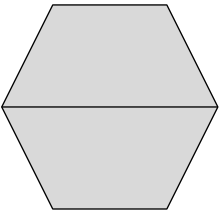
Answer:
Perimeter of ABCDEF Melinda’s hexagon = Side + Side + Side + Side + Side + Side
= AB + BC + CD + DE + EF +FA
= 3cm + 3cm + 3cm + 3cm + 3cm + 3cm
= 18cm.
Explanation:
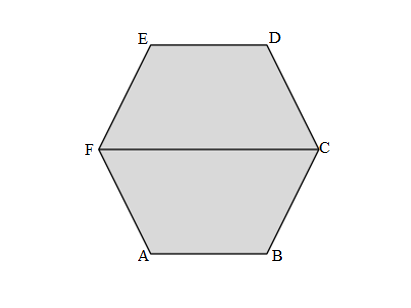
Length of the AB side of ABCDEF Melinda’s hexagon = 3cm
Length of the BC side of ABCDEF Melinda’s hexagon = 3cm
Length of the CD side of ABCDEF Melinda’s hexagon = 3cm
Length of the DE side of ABCDEF Melinda’s hexagon = 3cm
Length of the EF side of ABCDEF Melinda’s hexagon = 3cm
Length of the FA side of ABCDEF Melinda’s hexagon = 3cm
Perimeter of the ABCDEF Melinda’s hexagon = Side + Side + Side + Side + Side + Side
= AB + BC + CD + DE + EF +FA
= 3cm + 3cm + 3cm + 3cm + 3cm + 3cm
= 6cm + 3cm + 3cm + 3cm + 3cm
= 9cm + 3cm + 3cm + 3cm
= 12cm + 3cm + 3cm
= 15cm + 3cm
= 18cm.
Question 3.
Victoria and Eric draw the shapes shown below. Eric says his shape has a greater perimeter because it has more sides than Victoria’s shape. Is Eric right? Explain your answer.
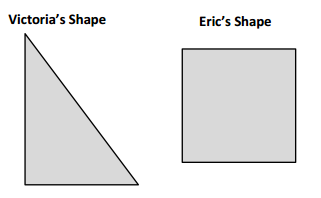
Answer:
Yes, Eric is correct because DEFG Square has more sides than the ABC Victoria’s triangle shape.
Perimeter of DEFG Eric’s Square shape is greater than the Perimeter of ABC Victoria’s triangle shape.
Perimeter of ABC Victoria’s triangle shape = 12cm
Explanation:
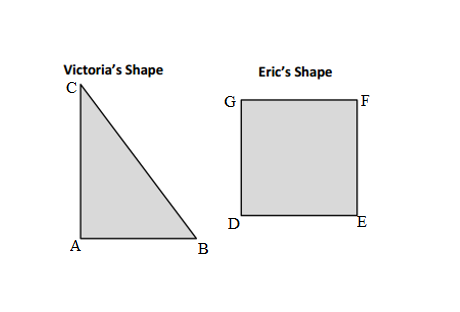
Length of AB Victoria’s triangle shape = 3cm
Length of BC Victoria’s triangle shape = 5cm
Length of CA Victoria’s triangle shape =4cm
Perimeter of ABC Victoria’s triangle shape = Side + Side + Side
= 3cm + 4cm + 5cm
= 7cm + 5cm
= 12cm.
Length of DEFG Eric’s Square shape = 4cm
Perimeter of DEFG Eric’s Square shape = Side × Side
= 4cm × 4cm
= 16cm.
Perimeter of Eric’s Square shape is greater than the Perimeter of Victoria’s triangle shape.
Question 4.
Jamal uses his ruler and a right angle tool to draw the rectangle shown below. He says the perimeter of his rectangle is 32 centimeters. Do you agree with Jamal? Why or why not?
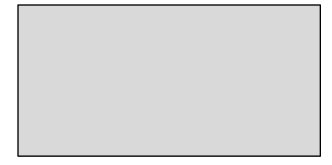
Answer:
NO, I disagree with Jamal. Jamal answer is incorrect because actual Perimeter of his ABCD rectangle is 30cm not 32cm.
Explanation:
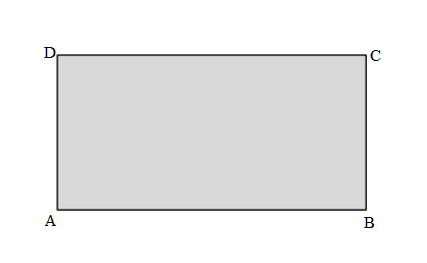
Length of the ABCD Rectangle Jamal drawn = 7.5cm
Width of the ABCD Rectangle Jamal drawn = 4cm
Perimeter of ABCD Rectangle Jamal drawn = Length × Width
= 7.5 × 4
= 30 cm.
Jamal answer is incorrect because actual Perimeter of his ABCD rectangle is 30cm not 32cm.
